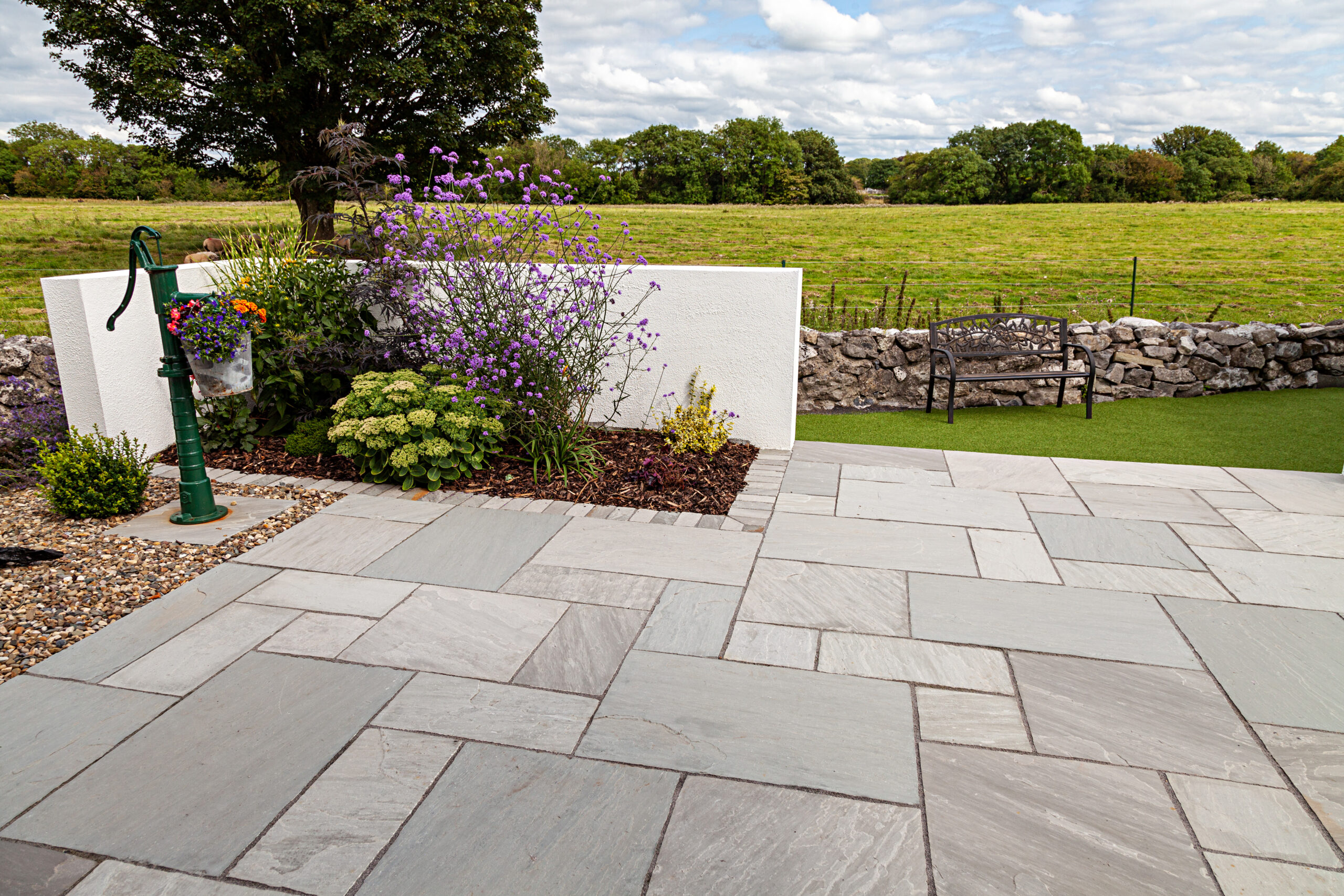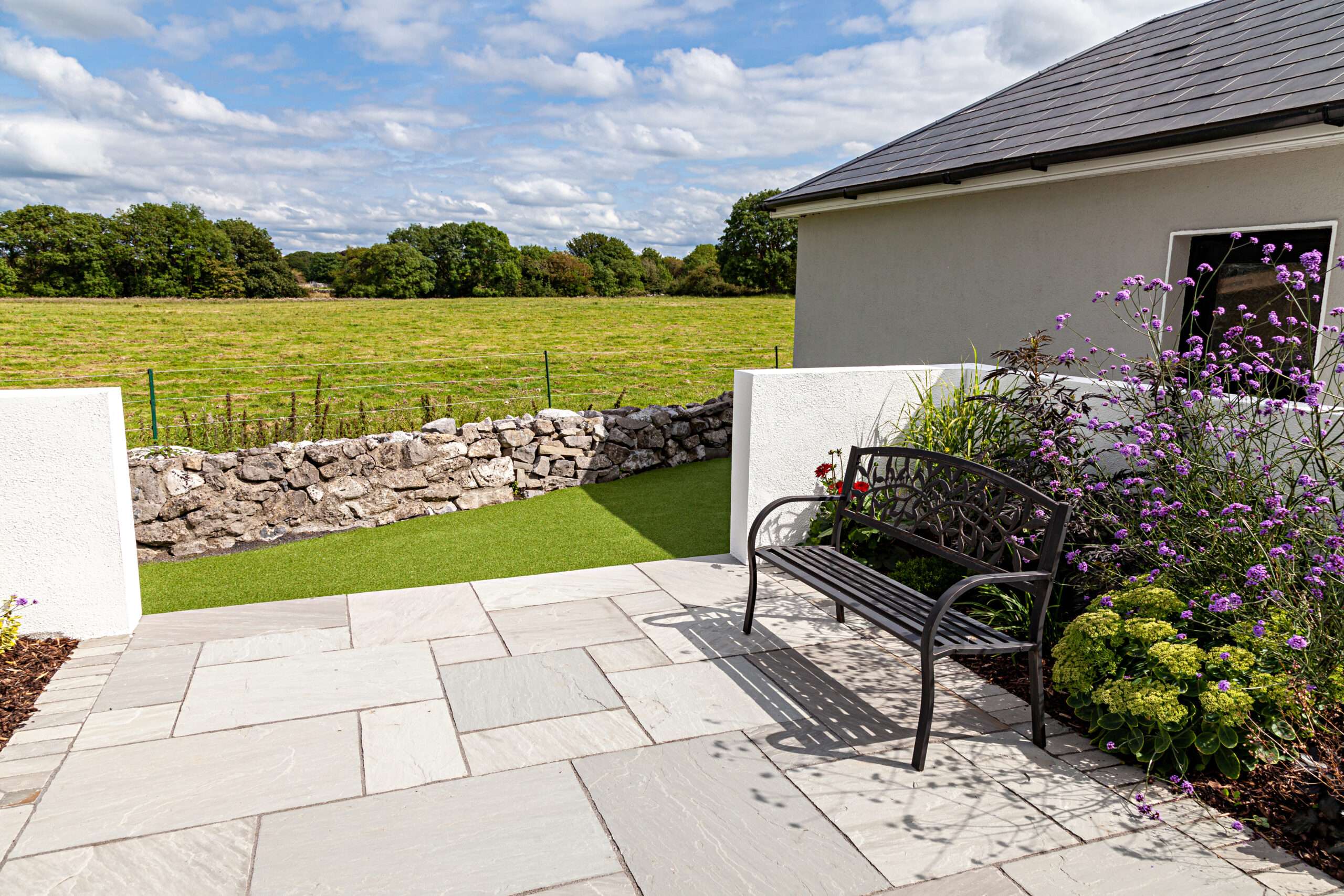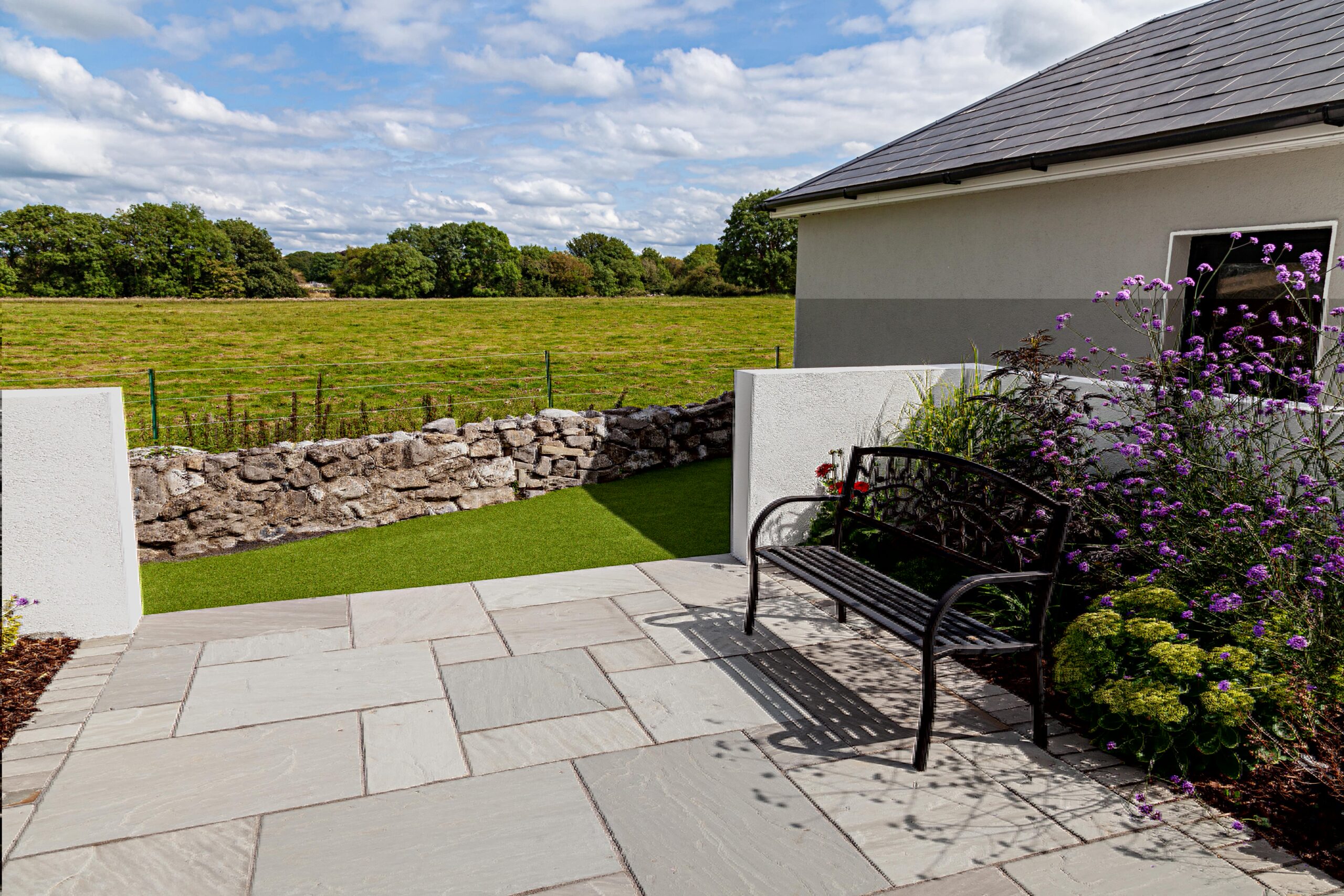Lorem ipsum dolor sit amet, consectetur adipiscing elit. Quisque finibus lorem sit amet enim ultrices commodo.
Continue readingWhere Is The Best Place To Position Your Patio
The best position for a patio usually seems obvious – back of the house, outside the
patio or bi-fold doors, but is that always the best spot for it?
We’ve teamed up with The Paving Expert, Tony McCormack, to find out.
Space to Entertain
For entertaining purposes, having easy access to the house, and especially the kitchen,
is a priority. No-one wants to walk further than necessary to bring out the forgotten
mayonnaise or another bottle of wine, but that doesn’t always mean the main patio
area has to directly outside the rear doors.
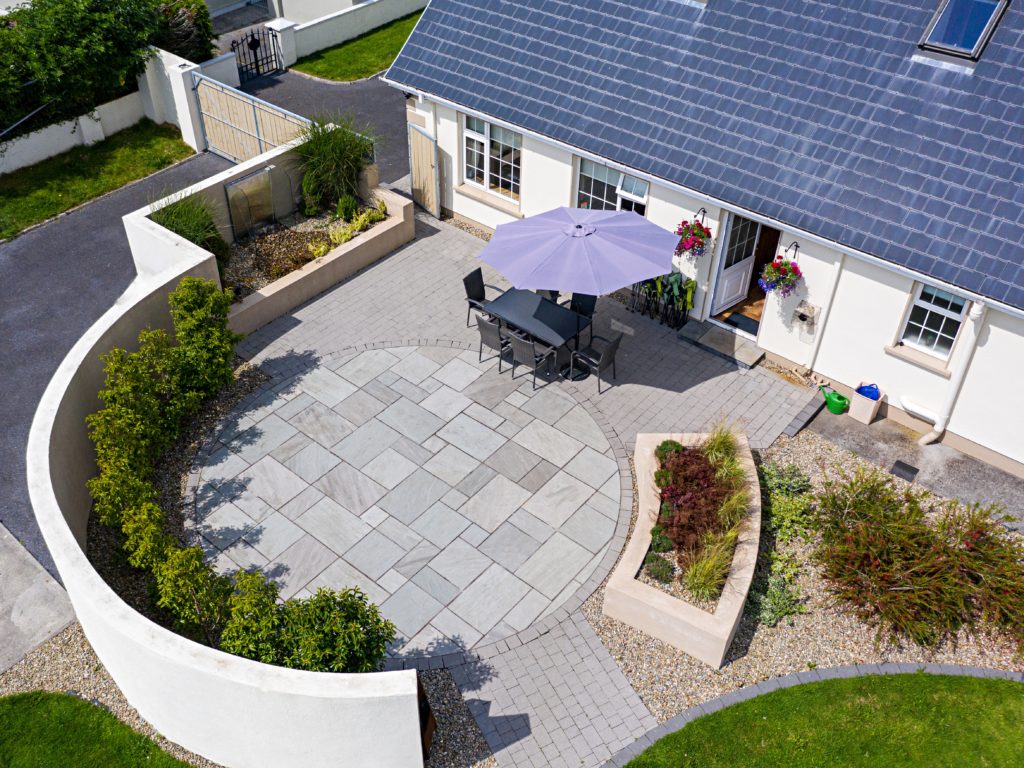
A “Landing Area” Patio Position
There’s no doubt a ‘landing area’ outside such access points is incredibly useful, but
does such an area need to be the main patio? On north-facing gardens, the house will
usually shade the area directly outside the rear doors, so it may not be the best place
for the perfect patio. It might be a better plan to have smaller area directly outside
the entrance doors, somewhere to remove muddy shoes, position the doormat, or
store the hosepipe, keep the bins, or park those items that are better out than in. This
then gives the opportunity to create a more expansive and family-oriented patio
elsewhere in the garden, even if it’s just a few metres away.
For those enjoying an after-work chill-out, think about where the late afternoon or
evening sun lingers longest, allowing you to bask in the embers of the day’s warmth.
Alternatively, if you’re more of a morning person, where’s the best spot to catch
those first chill-banishing rays?
Eavesdropping Neighbours
Bear in mind however, proximity to neighbouring properties. No-one wants to be in
a spot where you’re too easily overheard by those-next-door, or, vice-versa – to be an
involuntary eavesdropper on their domestic details. If you have the space, keep a
patio away from boundary fences, or, in less roomy plots, think about using a dense
hedge to absorb and muffle the sound in either direction.
Consider Privacy
And consider also a degree of privacy within the garden. If you have a young family,
it may be advantageous to be able to see as much of the garden as possible, or at least
the main playing area, but more mature homeowners often prefer a secluded nook,
where they can sit and snooze, do the crossword, or enjoy a cheeky snifter without
being on show to all and sundry.
Garden Features
A patio should be something attractive to look upon, so think about the positional
relationship to flower beds, water features, shrubberies and rockeries. Sometimes, it’s
easier to move or position such features to suit the patio, rather than squeeze the
patio into a less-than-ideal spot just to be able to see the pond.
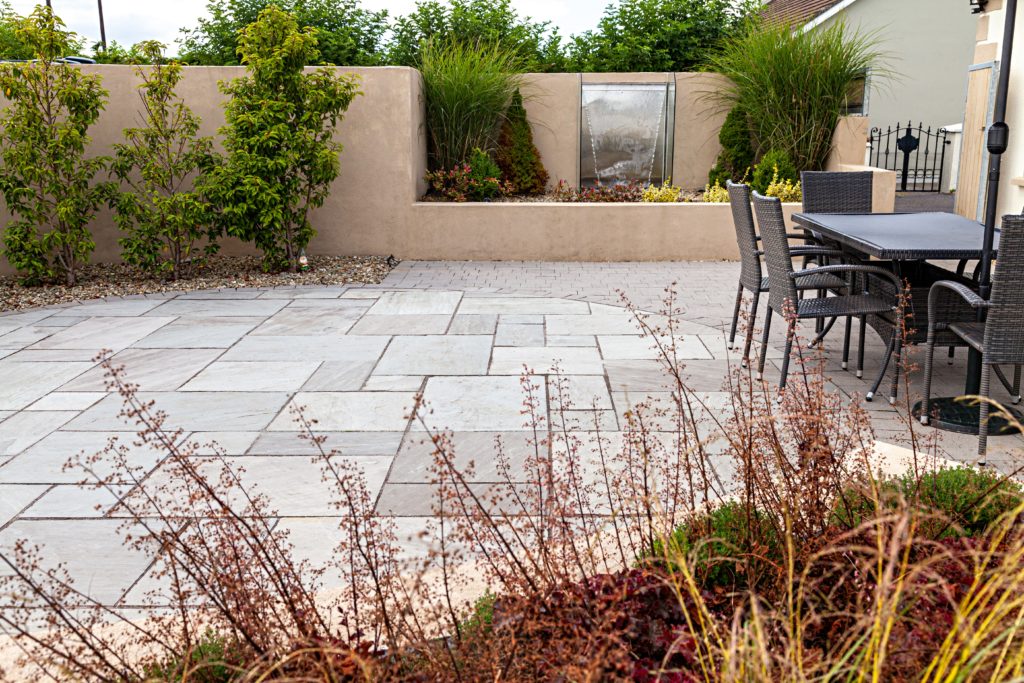
Paths and Lines
Patios that are separated from the main house need connecting paths, but do they
really need to be straight lines? A sinuous route is often more visually appealing but
probably only a couple of metres longer when measured-up. Or would stepping
stones be better suited? If so, think carefully about the spacing between each of the
‘stones’.
Your Patio is for You
So: don’t just settle for a simple rectangle centred on the patio doors or spanning the
bi-folds. Spend time thinking about how you want to use the patio. Is it simply a
seating area or something more? Does it make the most of the sun, or provide a
refuge of dappled shade for the hottest part of the day? Do you want a secluded
nook for two or an expansive platform for family and entertaining and fun?
There are no set rules for where to position a patio. It doesn’t have to be this or that or the other. It’s
your space. Have it your way and let it reflect your tastes, your style, your own
personality….and you’ll love it all the more.
To read about how to decide on a size and shape for your patio, read our previous blog here.
This article “Where Is The Best Place To Position Your Patio” was written by The Paving Expert, Tony McCormack, in conjunction with Joint-It.
Joint-It are a leading manufacturer of professional jointing and stone care products. The patio grout used in the photos of this article is Joint-It Simple: https://jointit.com/products/joint-it-simple/
How to Choose a Size and Shape For Your Patio
We’ve teamed up with The Paving Expert, Tony McCormack, to discuss how to choose a size and shape for your patio.
Does a patio always have to be square or rectangular?
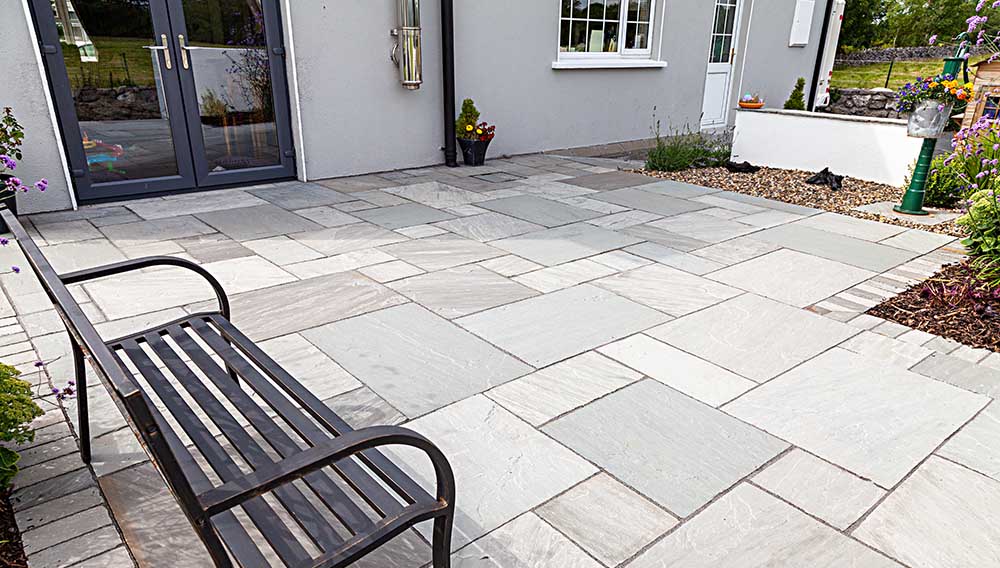
How to Choose a Size for your Patio
Patio Furniture Measurements
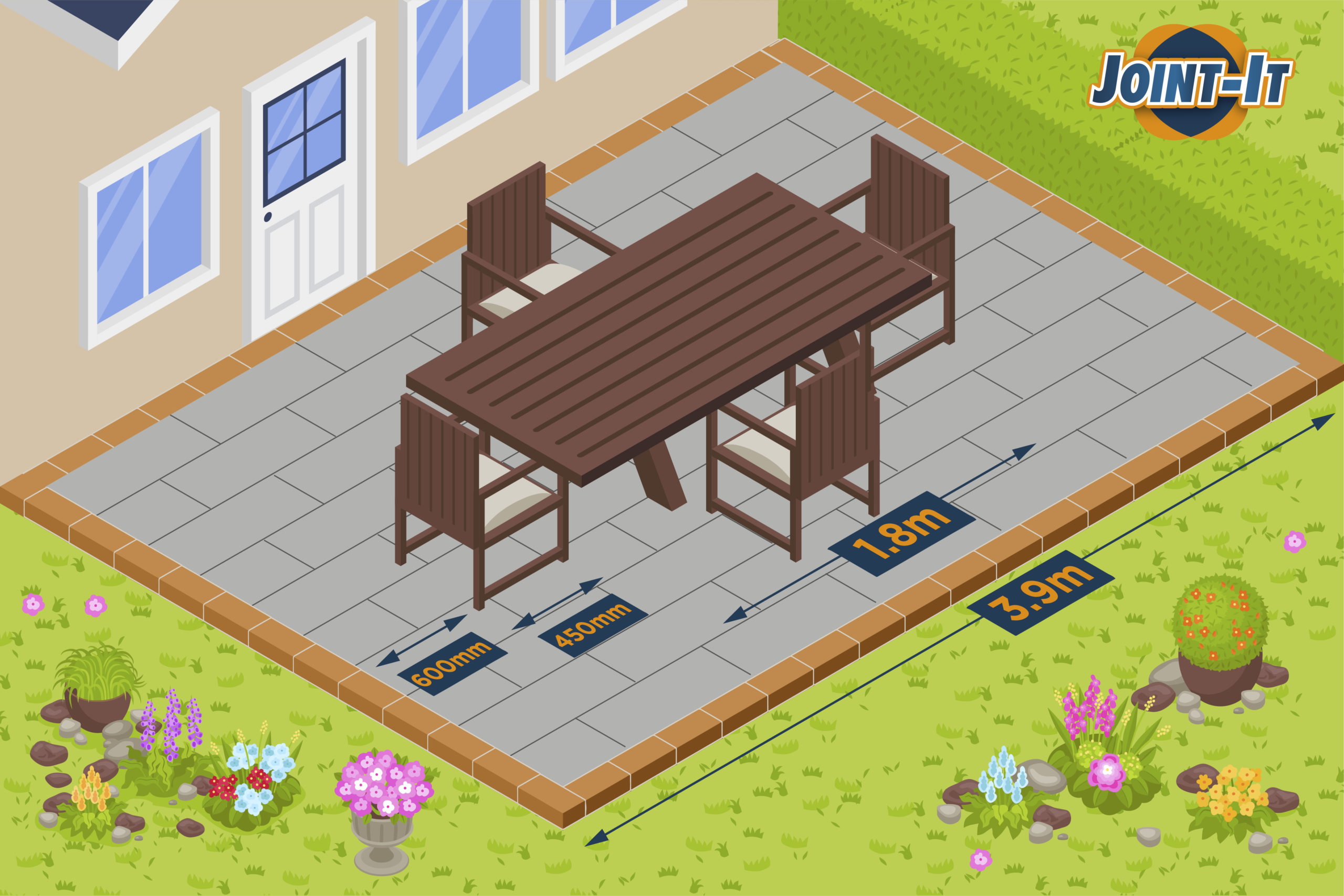
Top Tip
How to Choose a Shape for your Patio
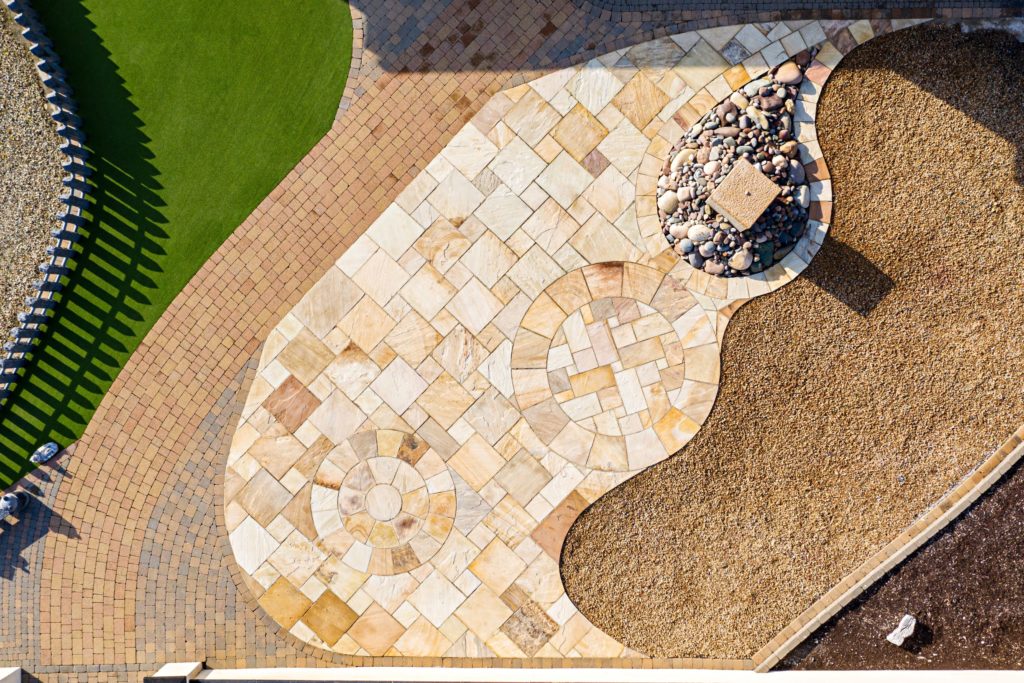
Final Thoughts
Joint-It are a leading manufacturer of professional jointing and stone care products. The patio grout used in the photos of this article is Joint-It Simple: https://jointit.com/products/joint-it-simple/

